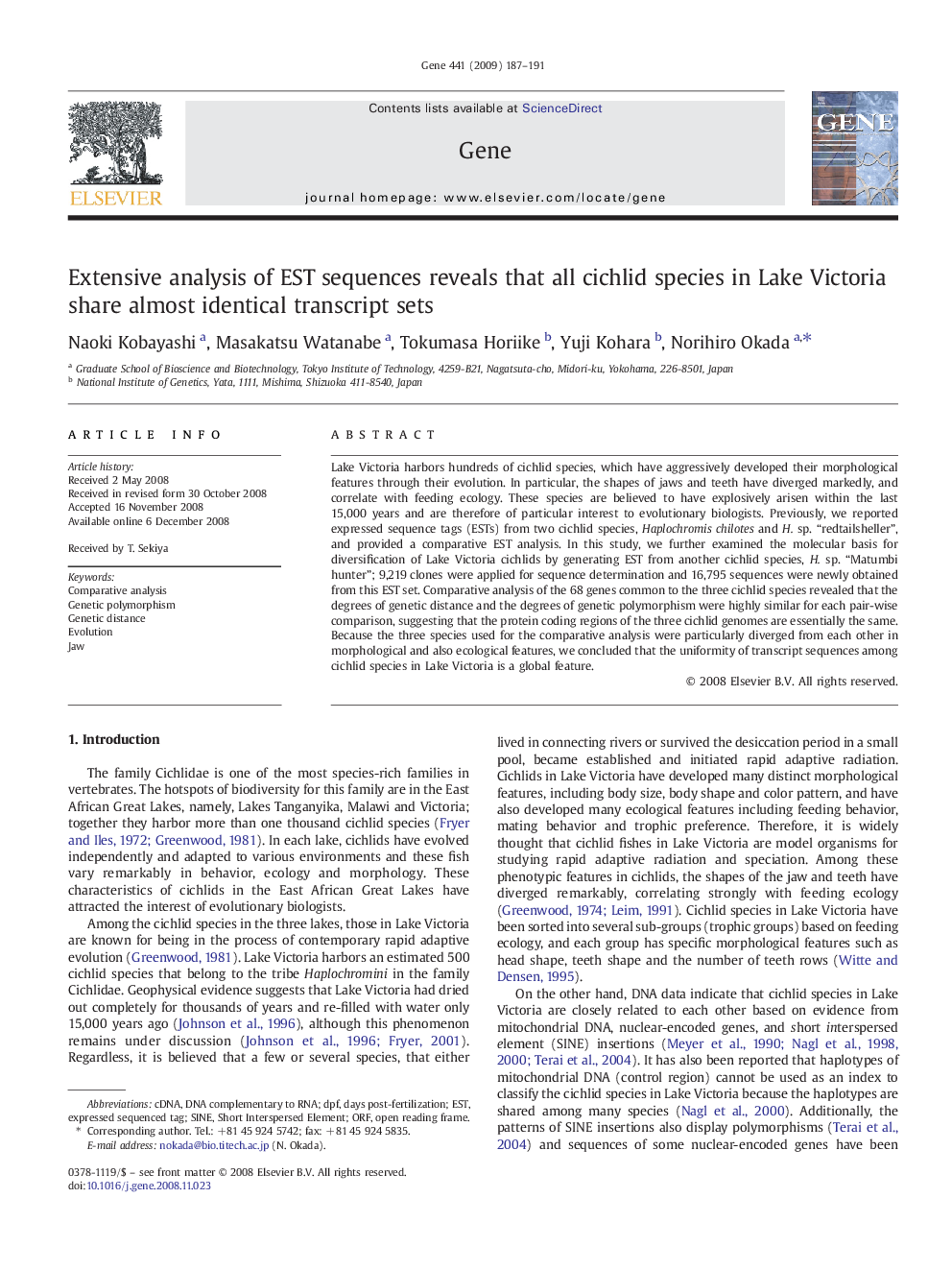| Article ID | Journal | Published Year | Pages | File Type |
|---|---|---|---|---|
| 2818807 | Gene | 2009 | 5 Pages |
Lake Victoria harbors hundreds of cichlid species, which have aggressively developed their morphological features through their evolution. In particular, the shapes of jaws and teeth have diverged markedly, and correlate with feeding ecology. These species are believed to have explosively arisen within the last 15,000 years and are therefore of particular interest to evolutionary biologists. Previously, we reported expressed sequence tags (ESTs) from two cichlid species, Haplochromis chilotes and H. sp. “redtailsheller”, and provided a comparative EST analysis. In this study, we further examined the molecular basis for diversification of Lake Victoria cichlids by generating EST from another cichlid species, H. sp. “Matumbi hunter”; 9,219 clones were applied for sequence determination and 16,795 sequences were newly obtained from this EST set. Comparative analysis of the 68 genes common to the three cichlid species revealed that the degrees of genetic distance and the degrees of genetic polymorphism were highly similar for each pair-wise comparison, suggesting that the protein coding regions of the three cichlid genomes are essentially the same. Because the three species used for the comparative analysis were particularly diverged from each other in morphological and also ecological features, we concluded that the uniformity of transcript sequences among cichlid species in Lake Victoria is a global feature.
